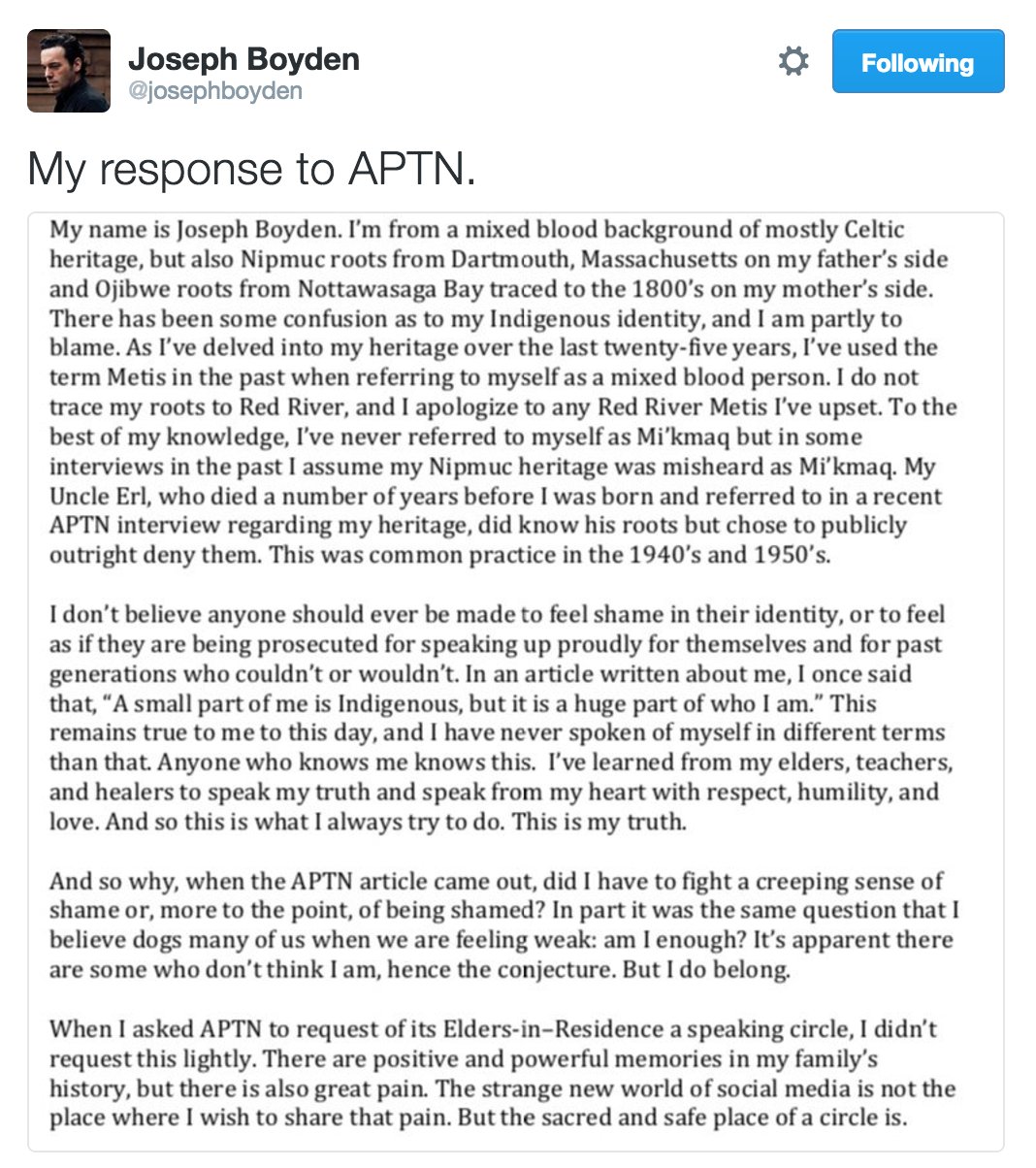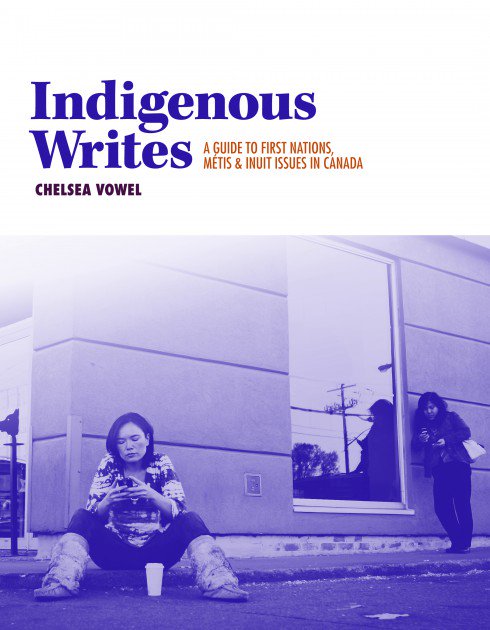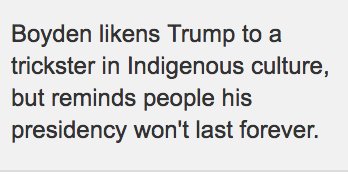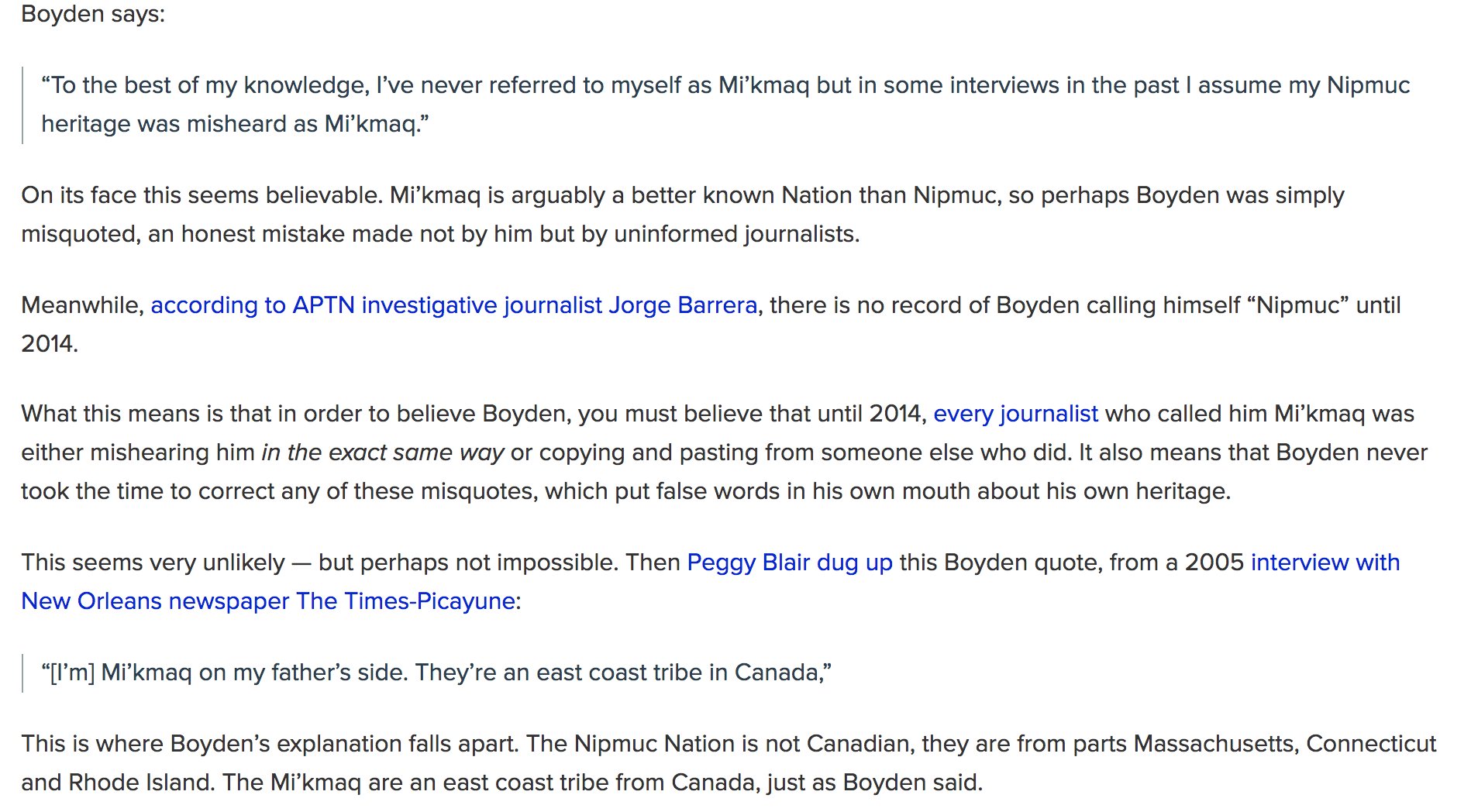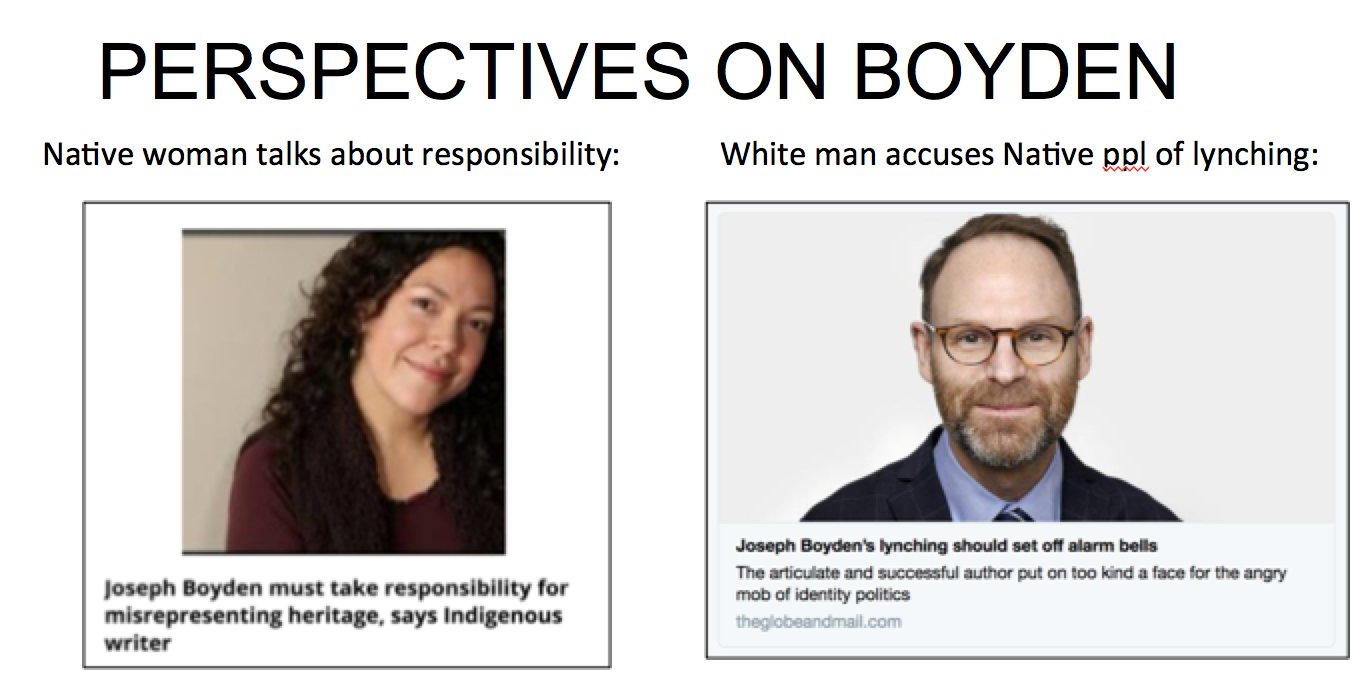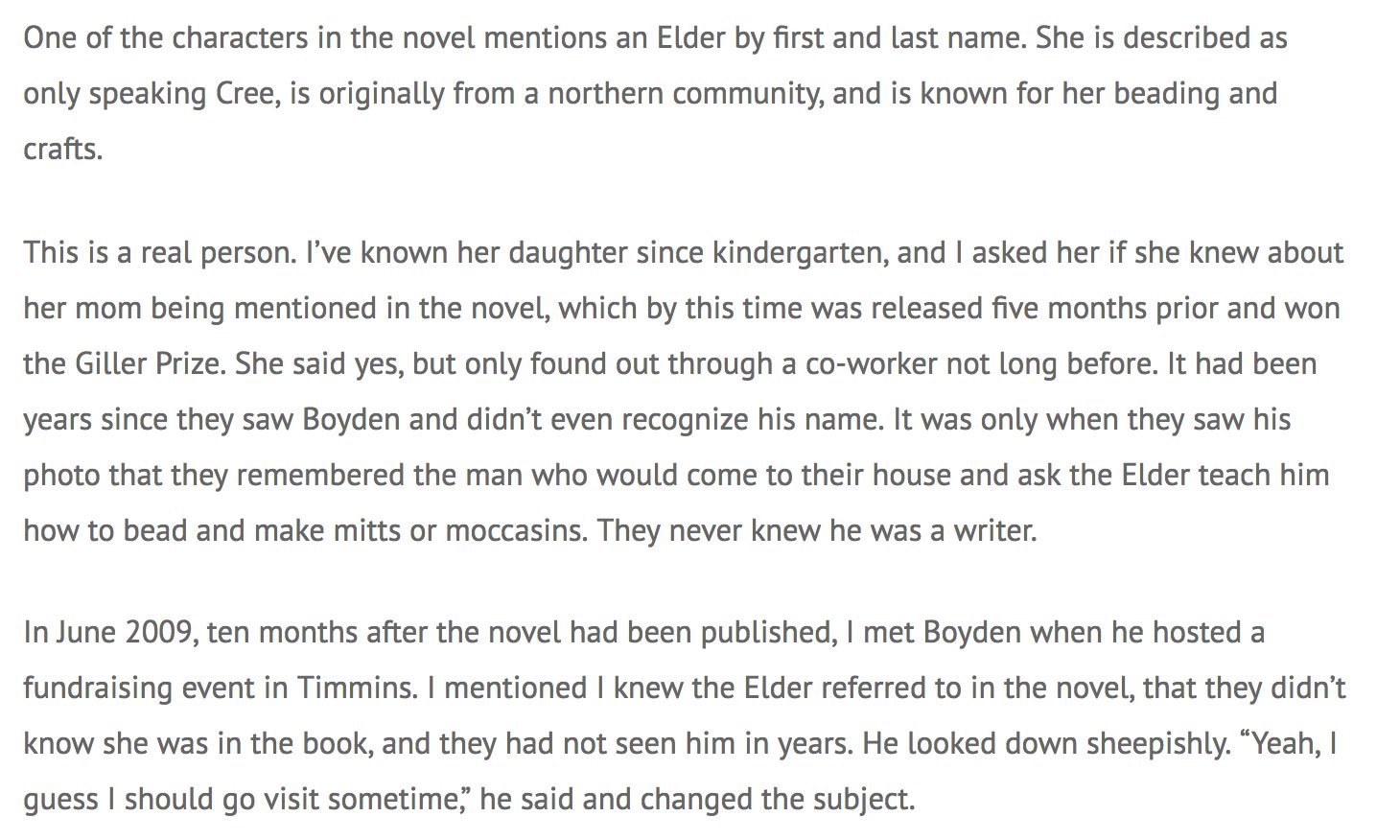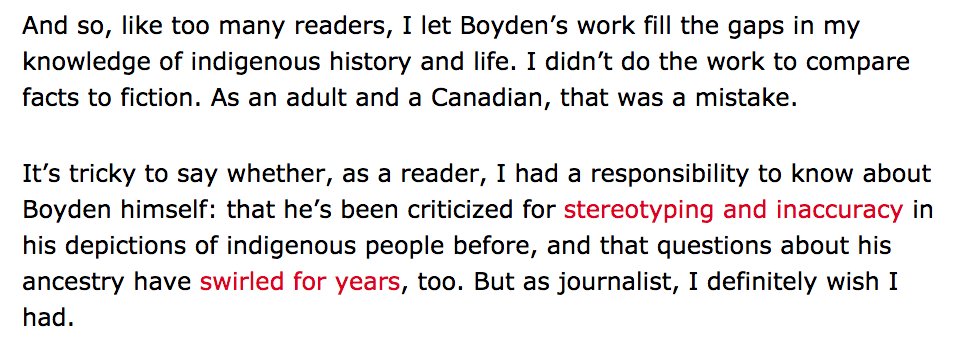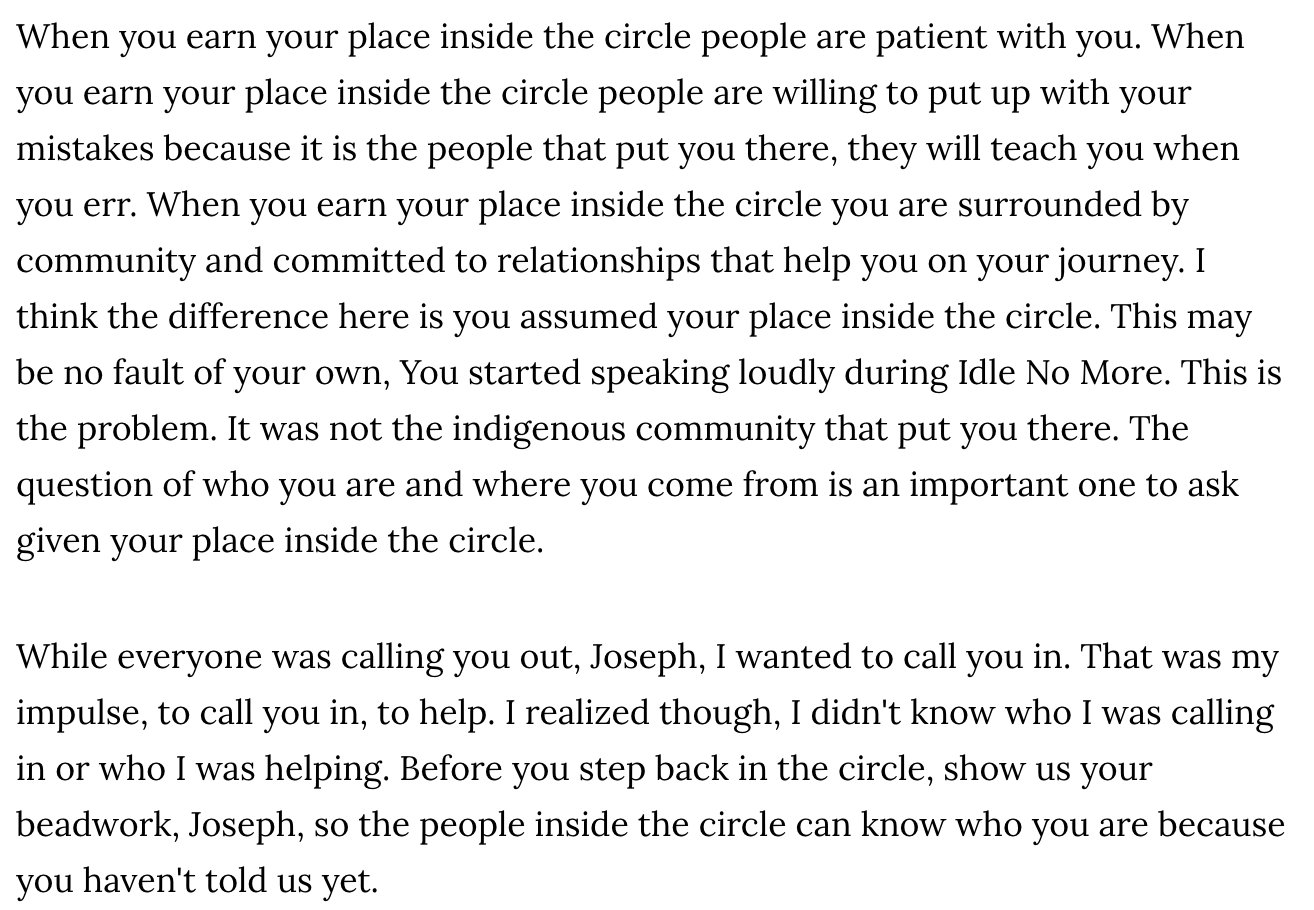Sometime last year, I received a copy of Melanie Florence's
Missing Nimama. It is a picture book, published in 2015 by Clockwise Press in Ontario Canada.
I didn't read it, then, because it didn't feel right. The subject of the book is Missing and Murdered Indigenous Women. I also got a copy of her young adult novel,
The Missing. I tried to read it, but after a few pages, set it aside.
I look at both of her books with the reality of Missing and Murdered Indigenous Women (MMIW) in mind. Regular readers of AICL know that I think it is important that children have books that mirror their lives. Regular readers also know that I think it crucial that we have books by Native writers who are writing from their own experiences and knowledge of our lives, past and present, in countries whose genocidal policies sought to eliminate us from our homelands. So, it might seem to AICL's readers that I'd welcome these two books by Melanie Florence.
I do not. Indeed, I do not recommend
Missing Nimama or
The Missing. It has been a challenge for me to articulate why I felt resistant to these two books. The prompt for a writing contest helped me figure out why I felt that way.
The Prompt
On January 10, I saw an announcement for a writing contest for children. Sponsored by World Literacy Canada, the judge for the contest is Melanie Florence. The prompt for the contest was written by her. To the right (below) is the poster that circulated. To the left is the text of the poster.
~~~~~~~~~~
WRITE FOR A BETTER WORLD. A writing contest for Canadian students in Grades 5 to 8
Stepping up for your friends, your community and the world! With Guest Judge Melanie Florence!
Write an original story describing what happens in 400 words or less:
"I remember how I felt when something was stolen from me. I swore I'd do anything to get it back. Then, Kateri and her grandmother had someone stolen from them. Kateri is my best friend and I knew I had to step up and help. Sometimes a friend just needs a superhero..."
What kind of superhero will you be? What happens next? That's up to you!
Contest theme was created by award winning author of
Missing Nimama, Melanie Florence.
~~~~~~~~~~
I was stunned by that prompt. How, I wondered, could anyone equate "something" that was stolen to "someone" that was stolen. In writing the prompt as she did, Florence characterized Native women who were missing, or who had been murdered, with something a child might have lost.
Clearly, a Native child whose mother was missing or murdered would not fare well in a classroom where a teacher put that prompt on the child's desk. Clearly, Florence was not thinking of Native children when she wrote that prompt.
How could Florence have written a prompt like that?
Her website tells us she has "Cree heritage."
What--in the midst of on-going conversations about Joseph Boyden's identity--I wonder, does "Cree heritage" mean? Does her use of "heritage" suggest she isn't living her life as a Cree person who hangs out with Cree or First Nations communities? Is a remote connection, where that heritage is an abstract concept, responsible for her being able to equate a stolen item with a stolen person?
It might be. As many have written, during these weeks of discussions of Joseph Boyden's identity, many Indigenous people in Canada who, as children were taken from their families, struggle to reconnect with their respective families and nations. It is difficult for many of them to reestablish those connections. Some have not been able to make that connection. If that is Melanie Florence's story, it would explain (to me) how she was able to write that prompt--and these two books, too.
When I saw that writing contest on Twitter, I objected to it. Others did, too. Within a few days, it was changed. Florence re-wrote a new prompt. Does it signal an understanding that she did not have before? The new prompt is this (text on write; screenshot on the right):
~~~~~
 |
| Revised story prompt |
Introducing our new story prompt!
Use your powerful voice to write an original story...
It can be hard when we lose someone important to us in our lives, or when we watch someone close to us lose someone who is important to
them. I remember how I felt
when I lost someone important
to me. In my case, it was when
my best friend in the world
moved away from her family.
~~~~~
Does that revised prompt tell us that Florence's two books about missing and murdered Indigenous women and girls are not stories from her own experience?
Missing Nimama
Let's turn, now to her picture book,
Missing Nimama. Here's the description, from Amazon:
A young mother, one of the many missing indigenous women, watches over her small daughter as she grows up without her nimama, experiencing important milestones - her first day of school, first dance, first date, wedding, first child - from afar.
A free verse story of love, loss, and acceptance told in alternating voices. Missing Nimama shows the human side of a tragic set of circumstances.
An afterword by the author provides a simple, age-appropriate context for young readers. Includes a glossary of Cree terms.
On the opening page, we see Kateri, a little girl in bed, asleep. She's dreaming of leaning against her mother while her grandmother tells them stories. We read that when she wakes, she'll lose her mother, all over again.
The review at
Quill and Quire said that the story is touching. That image--of the little girl waking and losing her mother all over again--is a good example of how the story might be called touching. That tug-on-the-heartstrings quality is present throughout the book.
To me, however, it is like the prompt for the writing contest. Rather than losing a mom all over again when she wakes, a Native child reading this book (or listening to it be read aloud) in a classroom, may be inadvertently traumatized by a teacher who may not know the child's history. As with the prompt for the writing contest, it feels like Florence did not imagine Native children as being part of her audience.
From that opening, the story splits into two voices: Kateri as she grows up, and her mother, watching her. But the second page is very unsettling--again--as I imagine a child whose mother was taken from her, reading Kateri's mother's words:
Taken.
Taken from my home. Taken from my family.
Taken from my daughter.
My kamamakos. My beautiful little butterfly.
I fought so hard to get back to you, Kateri.
I wish I could tell you that.
And when I couldn't fight anymore, I closed my eyes.
And saw your beautiful face.
"Fought so hard" and "couldn't fight anymore, I closed my eyes" --- that's horrible. Kateri's mother, we know, is dead. We have a murdered woman, speaking, telling her little girl, what happened to her. Would you do that, if you had been murdered and could speak to your child, or a child? I couldn't. I wouldn't. Would you?
As the story continues, Kateri's grandmother speaks of her daughter (Kateri's mother) in the present tense (n.p.)
"Your mother is a beautiful dancer, Kateri. Just like you."
Kateri's mother is missing for most of the story. Again--thinking of a Native child in a classroom, how does that child process this story if her own mother is missing. In
Missing Nimama she learns that Kateri's mother is not missing. She's dead. At one point, there's more about what happened to her. Kateri is older. She's having a dream, calling out to her mother. Her grandmother goes to her, telling her it was a dream. Kateri asks her grandmother to leave a light on because she doesn't like the dark. Beneath that is her mother's words:
So dark.
Dark in the room he took me to.
Dark when he left me. And so dark after.
I never saw a light or a tunnel. Only darkness.
Until my daughter's voice called me back.
What does that do to a child whose mother is missing? Native or not, isn't it just plain wrong to give that child this book? Later, when Kateri is an adult, she goes to gathering where people are carrying signs about missing and murdered women. On that page, Francois Thisdale (the illustrator for
Missing Nimama), has likenesses of photographs of missing and murdered women. I look at them and wonder if he used actual photographs to create those likenesses, If so, did he ask permission to do that? If not, it seems a violation of those women and their families, too.
The story winds down with a phone call to the adult Kateri, who is also now a mother:
Once upon a time, there was a girl,
a little butterfly
who flew to the phone every time it rang.
Hoping against hope
that her mother was coming home.
The phone rang today. I didn't run.
I had stopped running long ago,
hoping against hope.
"We found your mother," they said.
My heart nearly pounded out of my chest
for a moment,
hoping against hope.
But I knew she was gone. I had known for years.
Still, I cried.
Touching? Perhaps. Appropriate for children? No. That's where I end, with
Missing Nimama.
Not Recommended: Missing Nimama and The Missing
It is a picture book, which suggests it is for children, but the content renders it inappropriate for young children--or for children in the 5th through 8th grade (the World Literacy Canada writing contest is for children in those grades). It is where I end, too, with
The Missing. I won't read it. I can't read it. The violence we experience is real. Not abstract. Not appropriate subject matter, unless, maybe it is told directly from someone who has experienced it.
Florence won a major literary award for this book. It is the
TD Children's Literature Award, which is $30,000 given to the book that is "the best of the year in Canadian children's books."
Published in 2015, in the midst of a time during which Canadians, through the Truth and Reconciliation Commission, are learning about residential schools, it might seem timely. [The prize Florence won is the TD Children's Literature Award, which is $30,000 given to the book that is "the best of the year in Canadian children's books.]
To me, however,
Missing Nimama and the writing contest strike me as something Canadians can wrap their arms around, to feel like they're facing and acknowledging history, to feel like they're reconciling with that history.
But are they, really? I read writings from many Indigenous people in Canada. Most feel that reconciliation has become a shallow gesture. It is superficial. It is a token. Empty. Meaningless. Something they can cross off their list and move on, as they were before. Of course, that is far from ok.
To me, it is asking Native people to perform a tragedy on Canada's 150 stage. To many, this review of Florence's work will feel harsh. Most people are likely to disagree with me. That's par for the course, but I hope that other writers and editors and reviewers and readers and sponsors of writing contests will pause as they think about projects that involve ongoing violence upon Native women.
As always, I welcome your comments.
_____
For your convenience, I am adding comments from Native writers and scholars here, as I receive them.
Dr. Luana Ross (Confederated Salish and Kootenai Tribes, Flathead Indian Reservation in Montana), Associate Professor of Gender, Women & Sexuality Studies and Co-Director of the Native Voices project at the University of Washington, wrote:
Wow. I am shocked at the author equating something stolen (anything, really) with murdered and missing Native women. I am also very tired of people claiming to be Native (this isn't about enrollment) to get published or be seen as credible Native storytellers. If you have "heritage" it would be wise to let the readers know who your relatives are.
Fancy Bebamikawe (Anishinaabe from Wiikwemkoong Unceded Territory), wrote:
I wanted to share my concerns about Missing Nimama and The Missing by Melanie Florence.
Firstly, I'm concerned about such a mature topic being addressed in a children's book. MMIW is specifically about how native women and girls are targeted for violence and face systemic racism in the justice system. MMIW is not only an issue of violence against women and it cannot be minimized into the story of a girl finding out her mother was murdered. I don't think children this age are able to grasp these social power dynamics. I think most teachers would be unable to confidently field questions on MMIW.
Second, the author's use of violence against Indigenous women is gratuitous. This is a terrible book to teach about MMIW because Melanie Florence specifically writes Kateri's mother to die. The mother is written as a disposable, one-dimensional character that haunts Kateri like a ghost. Even when Kateri gets the call that her mother has been found, we are again reminded that Kateri's mother's death was inevitable and expected. Both of these assumptions tie into the very reason why Indigenous women and girls are being targeted for violence.
As someone that has attended Sisters in Spirit vigils and MMIW events for years, Melanie Florence's narrative is in direct opposition to the way families of MMIW feel and speak about their loved ones. In fact, a major critique of families of MMIW is the dehumanizing way the media reduces the entire life of a woman into a headline of her violent death.
Thirdly, this is a very inappropriate book for any child who has been impacted by MMIW. A native child in particular would naturally relate to Kateri, including adopting the guilt and violence that Kateri experiences. These are unnecessary and traumatic burdens to place on a young reader.
For all of these reasons I find both the author and awards committee don't fully understand the issue of MMIW. The family's of MMIW have led this movement for decades and I seriously question why their voices aren't present and their concerns aren't addressed. Finally, this author seems to use a vague claim on Cree heritage as a blank cheque to write whatever she wants about native people. Similarly to Joseph Boyden, there are specific places in the book that mash-up culture references from very different nations.
I would suggest having indigenous jurors if you are going to be handing out awards for indigenous works.










